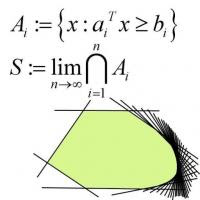- THE YES MEN FIX THE WORLD is a screwball true story about two gonzo political activists who, posing as top executives of giant corporations, lie their way into big business conferences and pull off the world's most outrageous pranks. This peer-to-peer special edition of the film is unique: it is preceded by an EXCLUSIVE VIDEO of the Yes Men impersonating the United States Chamber of Commerce.
 Economies attempt to increase efficiency by progressing up and right within the production possibilities, where one group can be made better off without making anyone else worse off. It's not possible to stray out of the set of production possibilities (those are "possibilities" after all). Economies can only progress along a continuous curve. Therefore to get over the "Humps" in the Pareto frontier, considerable sacrifice may be necessary. This is not easy.
Economies attempt to increase efficiency by progressing up and right within the production possibilities, where one group can be made better off without making anyone else worse off. It's not possible to stray out of the set of production possibilities (those are "possibilities" after all). Economies can only progress along a continuous curve. Therefore to get over the "Humps" in the Pareto frontier, considerable sacrifice may be necessary. This is not easy.Free market advocates say that economic shock (disasters) are "useful" for producing economic progress. Economic progress, on the above diagram, entails helping getting us over the humps. Disaster based "shock" enables this by shaking the economy so far from the Pareto optimal frontier (into the production possibilities set) that it ends up to the left and below the hump, from which it can progress up and towards a more improved economy. But is "shock" truly the only way?
Future envisionings exist that show, in reasonable detail, how the options for a possible future, given the current state of technology, would be better than those that exist today. On the diagram, technologists in a world of Region 1 or 2 might be able to envision Region 3. The question is how to progress on a continuous trajectory towards it. (Let's not nitpick how the regions are depicted and whether they are the frontier or the area, I used MS Paint to draw it.)
The fact is, it is politically difficult to move towards it. Asking constituents to make sacrifices is difficult. However, it might be possible if there was a (public) road map with projected progress towards that future (over time) being charted.
We need a clean slate analysis of the economy, independent of where we are today, to show where we can go. Then we need a road map to show in detail how we might get there. Finally, we need to move in that direction with will and conviction.
The one political point I want to make: The situation with renewable energy (as brought up by the movie) falls squarely into this category. On 27 Jul 2010, the US House Majority Leader unveiled the "Clean Energy Jobs and Oil Company Accountability Act" with the two most powerful clean energy provisions missing: a cap on carbon emissions from the electric power sector and a national Renewable Electricity Standard, which would require utilities to generate at least 15 percent of their electricity from renewable sources by 2021. No doubt, this was influenced by the old economy energy firms (fossil fuels) that are now rich with the pickings of their full product life cycles and using these resources in a harmful attempt to extend these life cycles via lobbying. The Aug 2 - Aug 8 2010 edition of Bloomberg Businessweek warn that this will result in USA losing out to China in the renewable energy race. (In the above framework, China's economy might be operating at a point left and below its hump, which its status as a "developing" power might support.)
In summary, a clean slate analysis reveals the possibility and what we must sacrifice, over some time horizon, to get there. A road map is a plan to get there. Political will and awareness of where we are going will get us there. Visibility of where we at all times in the process are will help maintain that will.




No comments:
Post a Comment